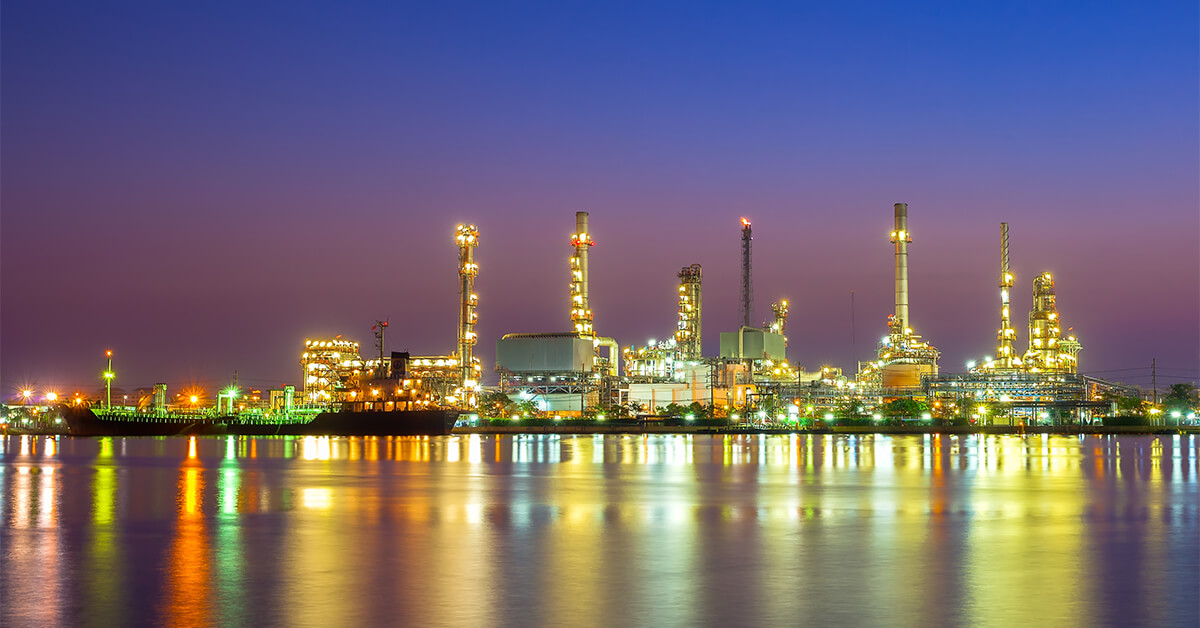
What’s worse than a sweating beer (or soda) can in the middle of summer? Warm beer, of course! This is why beer cans are often wrapped in insulative “koozies.” Not only does the koozie keep your beverage colder for a longer period of time—it won’t leave that dreaded water ring on your wooden table.
How Temperature & Humidity Impact Condensation
Condensation occurs on surfaces when there is enough humidity in the atmosphere and a cold enough surface temperature. Under the right conditions, humidity in the atmosphere will condense on the cool surface. There are two primary factors that come into play to determine whether this condensation will occur and to what extent:
- The temperature of the substrate relative to the atmospheric temperature
- The amount of humidity in the atmosphere
The chart below demonstrates how the dew point changes based on relative humidity (RH) and air temperature. The dew point can vary from the morning to the evening, as well as from season to season, depending on the level of humidity that is present—which is often lower during the colder months.
|
Dew Point at Relative Humidity (%) |
||||
|
Air Temperature |
100% |
80% |
60% |
30% |
|
90°F |
90°F |
85°F |
75°F |
55°F |
|
75°F |
75°F |
69°F |
60°F |
41°F |
|
50°F |
50°F |
44°F |
36°F |
n/a |
Considering the beer can as an example, let’s say the beer is at 38°F and the RH is 80% on a warm summer day at 90°F. Based on this information, the chart indicates that the dew point is 85°F. In other words, the beer is 47° colder than the dew point—which is why a beer can sweats profusely, and warms up so quickly, in a humid environment.
The use of a koozie helps to insulate the beer can, creating a thermal gradient between the can and the outside surface of the koozie. If the koozie is thick enough, the surface temperature can be effectively raised above the dew point to prevent condensation—and keep the beer cold!
Condensation in Industrial Environments
When it comes to industrial environments, a variety of condensation issues can occur on process vessels, piping, gas lines, storage tanks or even the sides of metal buildings. In fact, it’s not uncommon to see “sweating” occur on the north sides of storage tanks or the bottom half of railcars during the morning hours, before the sun has warmed the steel substrate.
When wet pipes or vessels drip on floors, this can present significant workplace safety issues—particularly if microorganisms begin to thrive, making the floors extremely slippery. Cyclic wet/dry exposures or the constant presence of water can lead to corrosion of the steel substrate unless properly protected.
Thermal Insulative Coatings as a Solution
Though not all “sweating” surfaces pose problems, the prevention and/or remediation of condensation is required when active corrosion of the steel substrate takes place or when workplace safety becomes a concern.
A newer technology that is applied like paint, thin-film insulative coatings can be used to provide the necessary insulation, effectively raising the dew point through a thermal gradient between the substrate and the outside air. These thermal insulative coatings work by trapping air throughout their film—much like a koozie. Their unique formulations balance the use of specialized fillers and industrial-strength binders to make them suitable for a variety of applications. Although they are most often used for high-temperature surfaces to protect workers from burns, another important function is for condensation control.
Because every situation and industrial environment are unique, the proper thickness for a thin-film insulative coating will be different for each application. For instance, the thicknesses needed for condensation control will vary for sweating pipes in the dry Southwest desert, compared to those in a high-humidity Gulf Coast environment.
An industrial coatings manufacturer can help you calculate the correct thickness for a thermal insulative coating based on a variety of factors, including the surface temperature, relative humidity and ambient air temperature.

